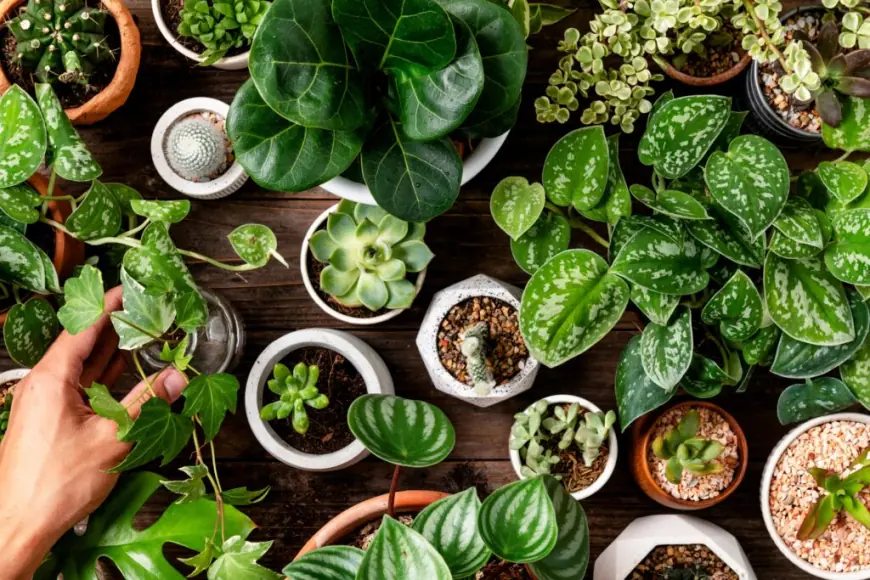Best Indoor Plants for Clean Air: A Guide to Air-Purifying Plants

If you're looking to improve the air quality in your home, Air Filtering Plants are a great option. These plants help remove harmful toxins from the air while also adding a touch of greenery to your space. Many common household plants are known for their ability to purify the air. In this article, we will explore some of the best indoor plants you can use to clean the air in your home.
What Are Air Filtering Plants?
Air filtering plants are plants that have been shown to absorb toxins from the air. They work by taking in carbon dioxide and releasing oxygen, while also filtering out harmful chemicals like benzene, formaldehyde, and trichloroethylene. NASA even conducted a study showing how certain plants could effectively remove these toxins from indoor environments. By adding these plants to your home, you can create a cleaner, healthier atmosphere.
Best Indoor Plants for Clean Air
Here are some of the best indoor plants known for their air-purifying abilities:
-
Snake Plant (Sansevieria trifasciata)
Snake plants are incredibly easy to care for and are known for their air-purifying qualities. They are great for removing formaldehyde and benzene. Snake plants can thrive in low light and only need watering every few weeks, making them perfect for beginners.
-
Peace Lily (Spathiphyllum)
Peace lilies are beautiful plants with dark green leaves and white flowers. They are very effective at removing airborne toxins, including ammonia, benzene, and formaldehyde. Peace lilies also help increase humidity, which can be beneficial for your skin and overall well-being. Just make sure to keep the soil moist, as peace lilies prefer a bit more water than other plants.
-
Spider Plant (Chlorophytum comosum)
Spider plants are well-known for their ability to purify air and are also easy to grow. They absorb carbon monoxide and formaldehyde from the air, which makes them ideal for kitchens and living rooms. Spider plants are also great for beginners, as they don’t need much attention.
-
Aloe Vera
Aloe Vera is not just a plant for soothing burns, but it also helps to clean the air. It absorbs formaldehyde and benzene, both of which are commonly found in household cleaning products. Aloe Vera is easy to grow and requires only occasional watering. Keep it in a sunny spot for the best results.
-
English Ivy (Hedera helix)
English Ivy is a versatile plant that’s very effective at filtering airborne toxins. It is especially useful for removing formaldehyde and benzene. Ivy plants also help reduce mold in the air, making them an excellent choice for humid environments like bathrooms. They can be grown in a hanging basket or as a trailing plant on shelves.
-
Areca Palm (Dypsis lutescens)
The Areca Palm is one of the Best Indoor Plants for improving air quality. It absorbs xylene, toluene, and formaldehyde, and releases oxygen to help purify the air. This plant thrives in bright, indirect light and requires regular watering to keep its soil moist. The Areca Palm can grow quite tall, so it’s perfect for larger rooms.
Why You Should Choose Air Filtering Plants
Using air filtering plants in your home not only enhances the beauty of your space but also improves your health. These plants remove harmful chemicals, creating a more breathable environment. They also help with reducing allergens and can even aid in better sleep by promoting healthier air. The best indoor plants for clean air are perfect for any room and can make a significant difference in your indoor air quality.
How to Care for Air Purifying Plants
Caring for air-purifying plants is usually quite simple. Here are some tips to ensure they thrive:
-
Light: Most air-purifying plants prefer indirect light. Avoid placing them in direct sunlight, as this can scorch their leaves.
-
Watering: Overwatering is a common mistake. Always check the soil before watering, and make sure it’s dry before adding more water. Some plants, like snake plants and aloe vera, require very little water.
-
Humidity: Many air-purifying plants, such as peace lilies and spider plants, prefer higher humidity levels. If you live in a dry climate, consider misting your plants or placing them in more humid areas of the house, like the bathroom.
-
Fertilizing: While air-filtering plants don’t need a lot of fertilizer, occasional feeding can help them grow better. Use a balanced, water-soluble fertilizer every month or so during the growing season (spring and summer).
Conclusion
Air filtering plants are a simple and effective way to improve indoor air quality. Whether you choose the hardy snake plant or the lush peace lily, adding these plants to your home can make a real difference. Not only do they purify the air, but they also bring natural beauty to your space. With proper care, these plants can thrive in any home, helping you create a healthier, more inviting environment.
What's Your Reaction?
 Like
0
Like
0
 Dislike
0
Dislike
0
 Love
0
Love
0
 Funny
0
Funny
0
 Angry
0
Angry
0
 Sad
0
Sad
0
 Wow
0
Wow
0




















































